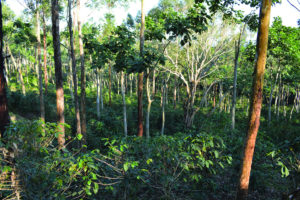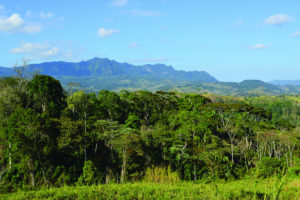
Gender, access to information and trees on farms: Considerations for climate change adaptation and mitigation.
This project analyzes the conditions under which women’s participation in community-level groups may influence their capacities to access and implement information on the use of trees on farms, in a territory distinguished by high climatic risk in north-central Nicaragua.
The research, which forms part of the CGIAR Research Program on Forests, Trees and Agroforestry (FTA), is carried out through collaboration between CATIE and World Agroforestry Centre (ICRAF) researchers based in Costa Rica and in Nicaragua.
The field site coincides with the Climate Smart Village of the CGIAR Research Program on Climate Change, Agriculture and Food Security (CCAFS) in Tuma la Dalia and the FTA Nicaragua-Honduras Sentinel Landscape.
Read also: Going deep on gender: research on climate-smart agroforestry in Nicaragua
The Nicaragua-Honduras Sentinel Landscape is characterized by a variety of land uses. Tree cover is therefore diverse, competition for land is high, and speculation and renting land are common, but these arrangements drive deforestation, hinder long term investments and exacerbate land degradation.
This Sentinel Landscape hopes to address some of the following questions:
- What conditions underlie the recuperation of tree cover?
- What is the current land uses on the landscape and the different models to re-introduce trees?
- Do current legal frameworks favor sustainable management or practices for the recuperation of trees?
- What are the implications of the different models of tree re-introduction (in terms of quantity, functional and taxonomic, for mitigation of climate change, hydrological network and connectivity within the landscape)?
- What are the changes to human welfare related to the different models of tree re-introduction?
- Where are areas of conflicts within the landscape?
- What are the trade-offs between social-ecological vulnerability and efficiency of the system under different models of tree re-introduction?
- What opportunities and limitations are therefore the different models of tree re-introduction?
- How to support initiatives for the re-introduction of trees in farms and landscapes to secure ecosystem restoration

Correspondingly, the research bases itself on data from the CCAFS gender household survey carried out in the territory in 2015 as well as on research insights from the NHSL project. Through funding from the Independent Science and Partnership Council, meetings with local stakeholders were recently carried out in order to share results and solicit feedback and inputs on research development.
The visits included the following organizations: the Research and Development Institute (NITLAPAN) of the Central American University (UCA) of Nicaragua; Christian Medical Action (AMC); the Organization for Rural and Urban Area Social and Economic Development (ODESAR); the Knowledge Management Network for Rural Development in Matagalpa and Jinotega (Red Gescon); and the Augusto Cesar Sandino Union of Farming Cooperatives (UCA San Ramón).
The sessions with local partners served to promote knowledge sharing on local gender dynamics and agricultural and agroforestry trends, with a focus on socially inclusive rural development and gender-sensitive climate change strategies.
For more on this project, visit the Sentinel Landscape page or click here for information in Spanish.
By Tatiana Gumucio, Gender Social Scientist, FTA Gender Integration Team.
This research forms part of the CGIAR Research Program on Forests, Trees and Agroforestry. This work is supported by CGIAR Fund Donors.











